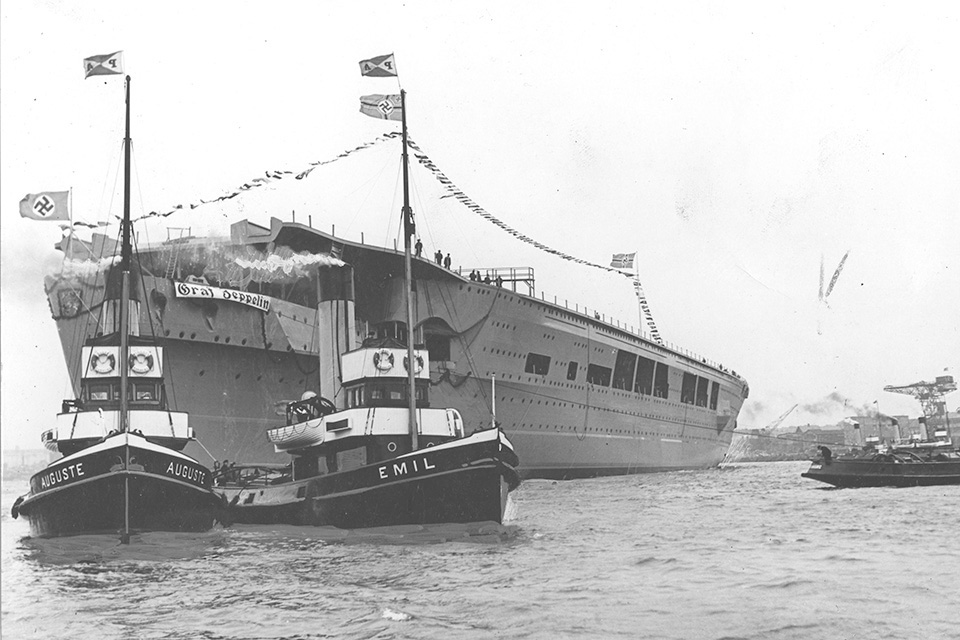Why didn’t Germany have any aircraft carriers?
Tom DeBarber
Dear Mr. DeBarber,
The principle reason for Nazi Germany never completing an aircraft carrier was constant changes in priority. One had, in fact, been ordered on November 16, 1935, was laid out in Kiel on December 26, 1936, and launched as Graf Zeppelin on December 8, 1938. The ship was never completed, however. After Germany’s victories in the West in 1940, the Kriegsmarine placed higher priority on coastal guns and other defenses for its new bases. When it came to aircraft, this was originally to have been navalized Messerschmitt Me-109T fighters (the “T” signifying Träger, or “carrier”), and Junkers Ju-87E dive bombers, but Reichsmarschall Hermann Göring insisted that the Luftwaffe’s growing needs precluded spending too much time and money on more specialized aircraft for a naval vessel. The final blow came after the disappointing Battle of the Barents Sea on December 31, 1942, and Adolf Hitler’s subsequent rant against the entire High Seas Fleet. Although the new naval commander in chief, Karl Dönitz, talked Hitler out of scrapping the entire fleet, on-and-off work on Graf Zeppelin ceased for good and it was never made fully operational before April 25, 1945, when it was scuttled in Stettin. The Soviets raised and took possession of it, but later expended it as a target on August 16, 1947. A later project involved converting the uncompleted heavy cruiser Seydlitz into the carrier Weser, but that was curtailed in June 1943, and the Soviets scrapped what they found of it after the war.
Sincerely,

Jon Guttman
Research Director
World History Group
More Questions at Ask Mr. History





